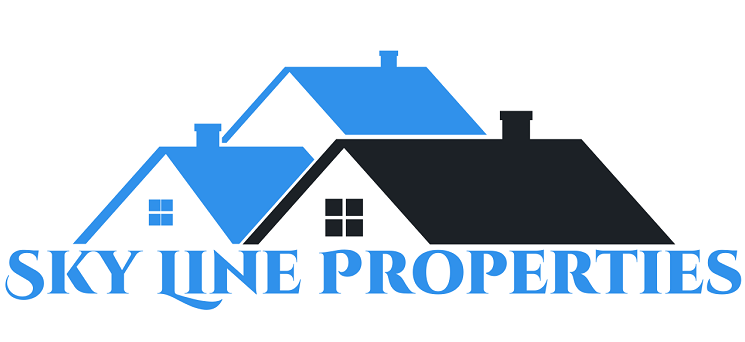
Property flipping, or “flipping houses,” is increasingly favored by investors who seek to maximize profits in the real estate market. The process of house flipping entails purchasing a property at a low price, renovating or improving it, and subsequently selling it at a higher price. In this ultimate guide, we will delve into the benefits of house flipping, debunk prevalent myths surrounding it, and offer valuable insights on how to effectively and profitably engage in this practice of flipping houses.
The Benefits of Property Flipping
Property flipping, also known as fix and flip or flipping real estate, offers several enticing benefits for real estate investors. Firstly, it provides a quick turnaround for profit. Unlike traditional real estate investments that may take years to appreciate, property flipping allows you to generate a substantial return on investment within a relatively short period of time.
Secondly, flipping properties offers a great opportunity for creativity and personalization. As a property flipper, you have the freedom to transform a rundown property into a beautiful, modern space. This creative process can be incredibly fulfilling and allows you to put your unique touch on each property flip.
Lastly, property flipping can be a lucrative business venture. With careful research and planning, you can identify properties with high potential for appreciation and maximize your profits. However, it is important to approach property flipping with a realistic mindset and understand the risks involved in this kind of business.
Common Myths About Property Flipping
Before diving into the world of property flipping, it is crucial to dispel common myths that may mislead aspiring investors. One common myth is that you need a large amount of money to flip properties. While having capital can certainly make the process easier, it is possible to flip properties with little to no money by utilizing creative financing strategies and partnerships.
Another myth is that house flipping is a guaranteed way to make money. While it is true that successful property flippers can make substantial profits, there are risks involved. Fluctuations in the real estate market, unexpected renovation costs, and unforeseen challenges can impact your profitability. It is important to conduct thorough research, due diligence, and have a contingency plan in place.

How to Flip a Property with No Money
Contrary to popular belief, it is possible to flip a property with little to no money. One strategy is to partner with individuals or companies who have the capital to invest in the property. By leveraging their funds, you can negotiate a profit-sharing agreement that allows you to flip the property without using your own money.
Additionally, you can explore creative financing options such as hard money loans or crowdfunding platforms. Hard money loans are short-term loans that are typically easier to qualify for, making them a viable option for property flippers. Crowdfunding platforms allow you to raise funds from a pool of investors who are interested in real estate projects.
Finding the Right Property to Flip
Finding the right property to flip is a crucial step in the flipping process. It is important to identify properties with potential for appreciation and profitability. One strategy is to look for distressed properties that are in need of renovation. These properties can often be purchased at a lower price, allowing for a higher profit margin when the property is sold.
Networking with real estate agents and attending property auctions can help you find potential properties to flip. Additionally, utilizing online listing platforms can also aid in your search for flip houses. It is important to thoroughly evaluate each property, considering factors such as location, market demand, and renovation costs. Conducting a comparative market analysis can provide valuable insights into the potential profitability of a flip property.
Overall, understanding what is a flip house and strategically selecting flip houses can greatly enhance your chances of success in the house flipping business.

Assessing the Potential Profitability of a Property
Assessing the potential profitability of a property is a crucial step in the flipping process. Before committing to a property, it is important to carefully evaluate the potential return on investment. Start by estimating the after-repair value (ARV) of the property. This can be done by analyzing recent sales of similar properties in the area.
Next, calculate the total cost of acquisition, including the purchase price, renovation costs, and any additional expenses such as closing costs or holding costs. Deducting the total cost of acquisition from the estimated ARV will give you an idea of the potential profit margin. It is important to leave room for unexpected expenses and market fluctuations when calculating potential profitability.

The Process of Fixing and Flipping a Property
Once you have successfully acquired a property to flip, the next step is the renovation process. This involves carefully planning and executing the necessary repairs and improvements to increase the property’s value. It is important to have a detailed renovation plan in place, outlining the scope of work, budget, and timeline.
When renovating a property, it is important to focus on improvements that will provide the highest return on investment. This may include updating kitchens and bathrooms, replacing outdated fixtures, or enhancing curb appeal. It is crucial to strike a balance between making desirable improvements and staying within budget.
After completing the renovations, it is time to market and sell your flipped property. Utilize effective marketing strategies such as professional photography, staging, and online listing platforms to attract potential buyers. It is important to set a competitive asking price based on the property’s value and market conditions. Working with a knowledgeable real estate agent can help you navigate the selling process and attract qualified buyers.
Marketing and Selling Your Flipped Property
Marketing and selling your flipped property is a critical step in the property flipping process. To attract potential buyers, it is important to showcase the property in its best light. Professional photography, virtual tours, and staging can greatly enhance the appeal of your property.
Utilize online listing platforms, social media, and traditional marketing channels to reach a wide audience. Highlight the unique features and improvements of the property, emphasizing the value it offers to potential buyers. Respond promptly to inquiries and schedule showings to maximize interest and generate offers.
When receiving offers, carefully evaluate each one based on factors such as the buyer’s financial qualifications and the terms of the offer. Negotiate if necessary to secure the best possible deal. Once an offer is accepted, work closely with the buyer, real estate agents, and legal professionals to ensure a smooth closing process.

Alternatives to Flipping: Renting vs. Selling
While flipping properties can be a profitable venture, it is important to consider alternative strategies such as renting or selling. Renting a property can provide a steady stream of passive income, especially in areas with high rental demand. This can be particularly beneficial if you are unable to sell the property for a desired price or if you want to hold onto the property for long-term investment purposes.
On the other hand, selling a property allows for a quick return on investment and eliminates the responsibilities associated with being a landlord. If you are looking to generate immediate cash flow or if the market conditions are favorable for selling, this may be the preferred option.
It is important to carefully weigh the pros and cons of each strategy and consider factors such as market conditions, rental demand, and your long-term investment goals.

Financing Options for Property Flipping
When it comes to financing property flipping projects, there are several options available. Traditional lenders such as banks and credit unions offer mortgage loans that can be used to purchase and renovate properties. However, these loans often require a down payment and may have stricter qualification criteria.
Another option is to explore hard money loans, which are short-term loans specifically designed for real estate investors. Hard money lenders focus more on the value of the property rather than the borrower’s creditworthiness, making them a viable option for property flippers. However, hard money loans often come with higher interest rates and fees.
Crowdfunding platforms can also be a source of financing for property flipping projects. These platforms allow you to raise funds from a pool of investors who are interested in real estate investments. This can be a great option if you have a compelling investment opportunity and are able to effectively communicate the potential returns to potential investors.

Mistakes to Avoid When Flipping Properties
Flipping properties can be a lucrative investment strategy, but it is important to avoid common pitfalls that can lead to financial losses. One common mistake is underestimating renovation costs. It is crucial to conduct a thorough inspection of the property and obtain accurate quotes from contractors before committing to a purchase. Leaving room for unexpected expenses can help mitigate the risk of going over budget.
Another mistake to avoid is overpricing the property. While it is natural to want to maximize your profits, setting an unrealistic asking price can deter potential buyers and prolong the selling process. Conducting a comparative market analysis and working with a knowledgeable real estate agent can help you set a competitive asking price.
Lastly, it is important to avoid cutting corners on quality. While it may be tempting to take shortcuts in order to save money, this can negatively impact the value of the property and result in lower offers from potential buyers. Invest in quality materials and workmanship to ensure a desirable end product.
Flipping properties can be a rewarding and profitable venture if approached with careful planning and execution. By understanding the benefits of property flipping, debunking common myths, and utilizing creative financing options, you can maximize your profits and achieve success in the real estate market.
Remember, if you are looking to sell your property for quick cash, don’t hesitate to call us at 260-220-8715. We will buy your property for cash, close on your time, and pay all fees and closing costs. Call our team of experts today for a free no obligation offer on your property.
